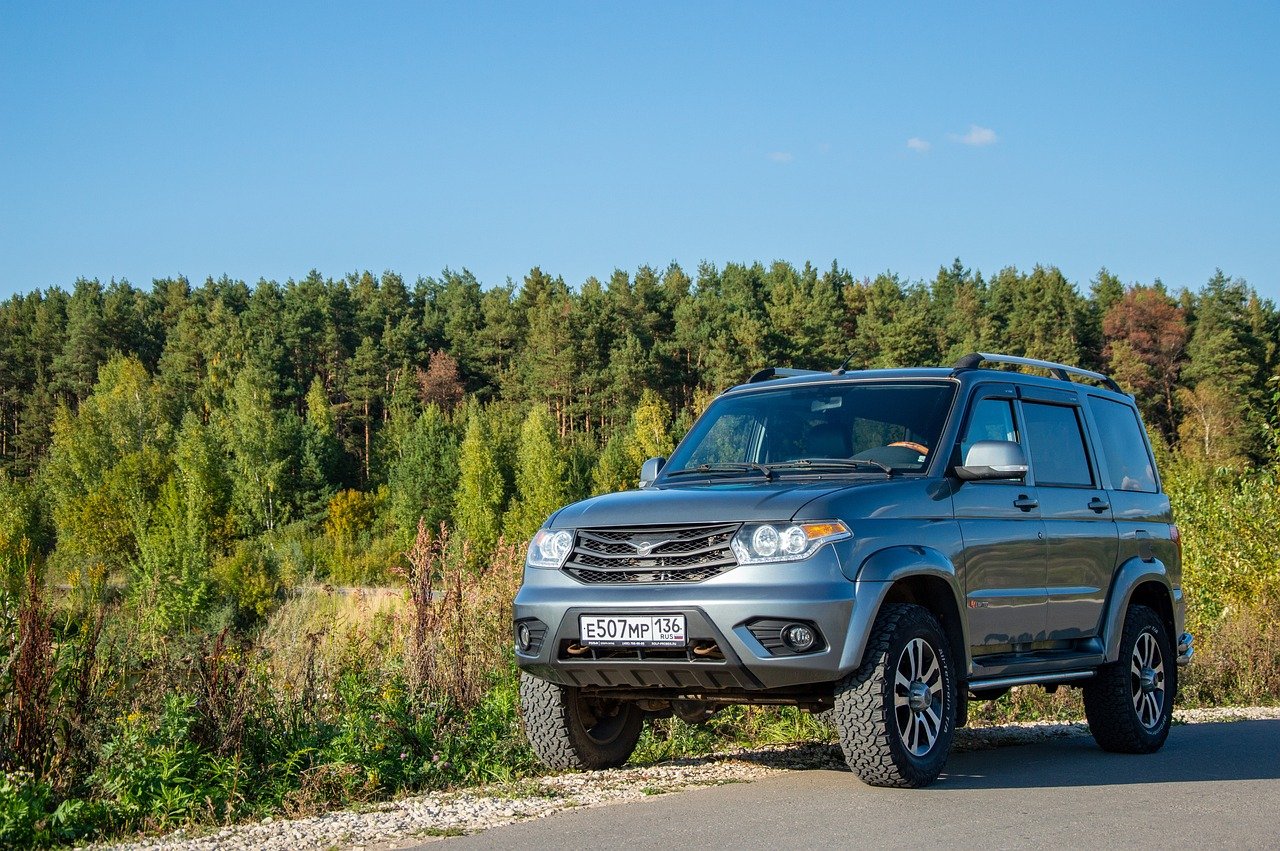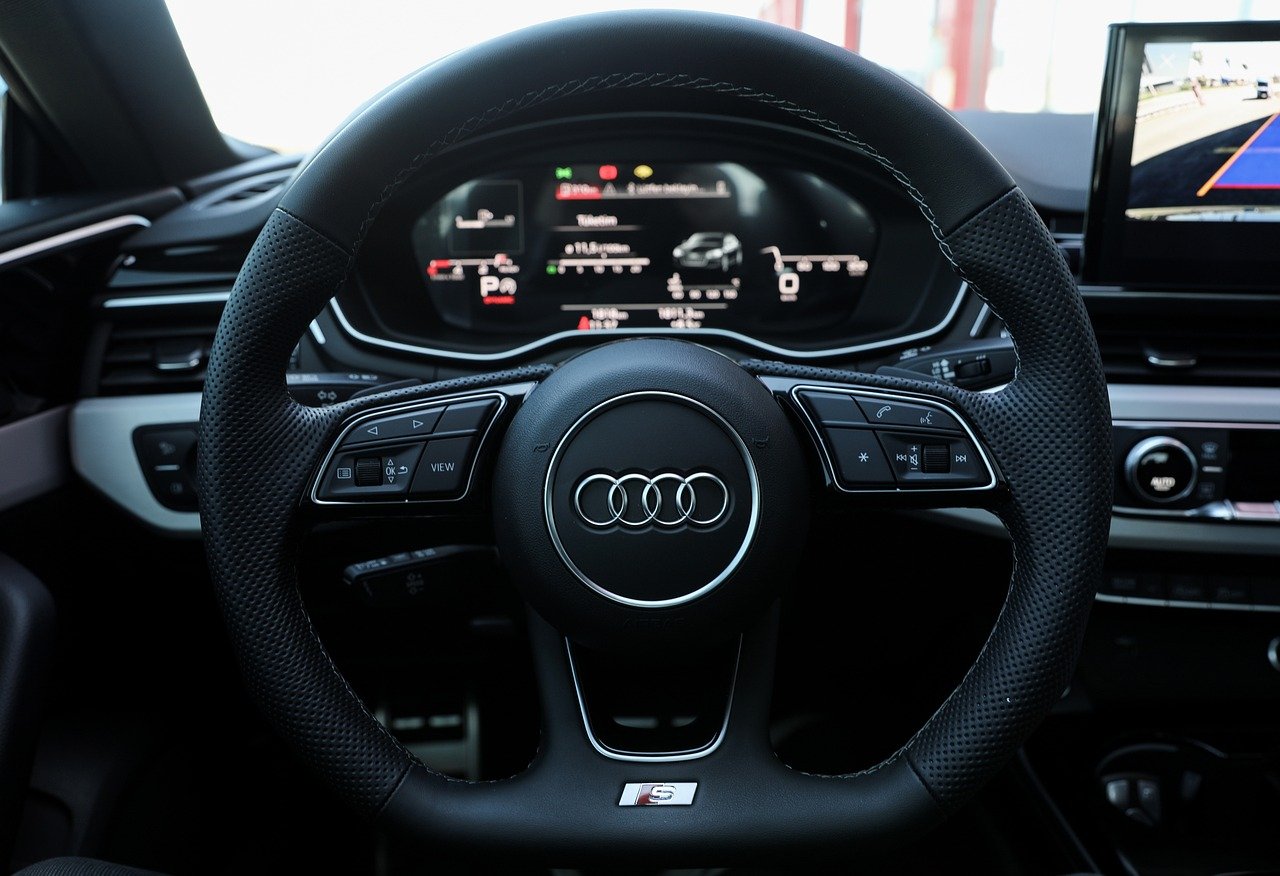Child Safety in Cars - What You Need to Know
When it comes to keeping our little ones safe, nothing is more important than ensuring their safety in vehicles. Did you know that car accidents are one of the leading causes of injury and death for children? It's a shocking statistic that should make every parent sit up and take notice. Understanding child safety in cars is not just about following the law; it's about protecting your most precious passengers. In this article, we will delve into essential information regarding car seat regulations, best practices, and tips to make every trip as safe as possible. So buckle up, and let's navigate through the world of child safety in cars together!
Car seats are not just fancy accessories; they are a vital component in safeguarding your child during car rides. Think of a car seat as a protective cocoon, designed to absorb the impact of a crash and shield your child from harm. But here's the kicker: merely having a car seat isn't enough. Proper usage and installation are crucial to maximizing safety. A poorly installed car seat can be as dangerous as having no seat at all! It's essential to follow the manufacturer's instructions carefully and ensure that the seat is securely fastened in your vehicle. Remember, safety isn't just a checklist; it's a commitment to your child's well-being.
Choosing the right car seat can feel overwhelming with so many options available. But don’t worry; we’ll break it down for you! There are three main types of car seats: infant seats, convertible seats, and booster seats. Each is designed for different stages of your child's development. Understanding these types will empower you to make informed decisions based on your child's age, weight, and height.
Infant car seats are specifically designed for newborns and small babies, usually weighing up to 30-35 pounds. These seats are typically rear-facing, which is the safest position for young children. They feature a five-point harness system that keeps your baby snug and secure. When using an infant car seat, it’s essential to ensure that it meets all safety standards and guidelines. Also, make sure to check the expiration date, as car seats have a limited lifespan. Remember, keeping your baby safe is worth every extra minute it takes to install that car seat correctly!
Convertible car seats offer versatility as they can be used both rear-facing and forward-facing. Initially, they are used in the rear-facing position for infants and can be switched to forward-facing as your child grows. The American Academy of Pediatrics recommends keeping children rear-facing until they are at least two years old or until they reach the maximum height or weight limit for that position. This transition is crucial for your child's safety, as rear-facing seats provide better support for their head, neck, and spine during a crash.
Once your child outgrows their car seat, it's time to consider a booster seat. Booster seats are designed for older children who weigh between 40 and 100 pounds. They elevate your child so that the vehicle's seat belt fits properly over their shoulder and lap. It's important to remember that booster seats are not a one-size-fits-all solution. Ensure that your child meets the necessary height and weight requirements before making the switch. Using a booster seat can significantly reduce the risk of injury in a crash, so don’t skip this vital step!
Proper installation of car seats is crucial for child safety. Here are some essential tips to ensure that your car seat is installed correctly:
- Always read the car seat manual and your vehicle’s owner manual.
- Use either the seat belt or the LATCH system to secure the car seat, but not both at the same time.
- Make sure the car seat does not move more than one inch side to side or front to back when pulled at the base.
- Ensure the harness is snug against your child’s body with no slack.
Each state has specific regulations regarding child passenger safety that parents need to be aware of. These laws can vary significantly, so it’s essential to stay informed. For example, some states require children to remain in rear-facing car seats until they reach a certain age or weight. Familiarizing yourself with your state’s regulations can help you avoid fines and, more importantly, keep your child safe. For a quick reference, check out the table below:
| State | Rear-Facing Requirement | Booster Seat Requirement |
|---|---|---|
| California | Until 2 years old | Until 8 years old |
| Texas | Until 2 years old | Until 8 years old |
| New York | Until 2 years old | Until 8 years old |
Many parents unknowingly make mistakes when it comes to child safety in cars. Here are some common pitfalls to watch out for:
- Not reading the car seat manual thoroughly.
- Switching to a forward-facing seat too soon.
- Failing to secure the car seat tightly in the vehicle.
By being aware of these mistakes, you can take proactive steps to ensure your child's safety on the road.
Numerous resources are available to assist parents with child safety in cars. Organizations like the National Highway Traffic Safety Administration (NHTSA) and Safe Kids Worldwide offer valuable information, guidelines, and even car seat inspection events. Websites like NHTSA Car Seat Safety provide comprehensive resources for parents to educate themselves and ensure their child's safety in vehicles.
Q: When should I switch my child from a rear-facing car seat to a forward-facing seat?
A: It's recommended to keep your child in a rear-facing car seat until they are at least 2 years old or until they reach the maximum height or weight limit for that seat.
Q: How do I know if my child's car seat is installed correctly?
A: The car seat should not move more than one inch side to side or front to back when pulled at the base. Additionally, the harness should be snug against your child's body.
Q: Are there any resources for car seat checks?
A: Yes! Many local fire departments, hospitals, and community organizations offer car seat inspection events. You can also check with the NHTSA for local resources.

The Importance of Car Seat Safety
When it comes to ensuring the safety of our little ones during car rides, car seats are not just accessories; they are essential life-saving devices. Imagine driving down the road, and suddenly, you have to hit the brakes. Without a proper car seat, your child could be at risk of serious injury. It's a scary thought, isn’t it? That's why understanding the critical role of car seats is vital for every parent.
Car seats are designed to protect children in the event of a crash. They absorb impact and keep the child securely in place, significantly reducing the risk of injury. However, it’s not enough to simply have a car seat; it must be used correctly. According to the National Highway Traffic Safety Administration (NHTSA), nearly 59% of car seats are misused in a way that could reduce their effectiveness. This statistic highlights the importance of not only choosing the right seat but also ensuring it is properly installed and adjusted.
So, what does proper usage look like? First off, you need to consider the age, weight, and height of your child. Each car seat comes with guidelines that specify the appropriate age and size for use. For instance, infants should always ride in a rear-facing seat until they reach the maximum weight or height limit allowed by the manufacturer. This position offers the best protection for their fragile neck and spine during a collision.
Furthermore, it’s crucial to check for the correct installation. Did you know that many car seats come with built-in indicators that show when the seat is installed correctly? Make sure to take advantage of these features! Additionally, always refer to both the car seat manual and your vehicle’s owner manual for specific instructions on how to install the seat securely. A snug fit can make all the difference in a crash scenario.
Lastly, let’s not forget about the importance of education. Many local fire departments and hospitals offer free car seat safety checks. Taking advantage of these resources not only ensures that your seat is installed correctly but also provides peace of mind knowing that you’ve done everything possible to keep your child safe.
In conclusion, car seat safety is not just a recommendation; it’s a responsibility. By understanding the importance of proper car seat usage and installation, you are taking the necessary steps to protect your most precious passengers. Remember, it’s better to be safe than sorry—investing time in learning about car seat safety can ultimately save a life.

Types of Car Seats
When it comes to ensuring the safety of our little ones during car rides, understanding the different is essential. Each type of seat is designed with specific age, weight, and height requirements in mind, making it crucial for parents to choose the right one. Think of it like choosing the perfect outfit for a special occasion; it needs to fit just right to provide comfort and protection. In this section, we’ll explore the three main types of car seats: infant seats, convertible seats, and booster seats.
First up, we have infant car seats. These seats are specifically designed for newborns and small babies, typically weighing up to 30-35 pounds. They are rear-facing, which is the safest position for young children. The snug fit and side-impact protection features in these seats are like a warm hug for your baby, keeping them secure during any ride. It’s essential to install these seats correctly, as even a small misalignment can compromise safety. Most infant car seats come with a base that remains in the car, allowing for easy transfer of the seat in and out without disturbing your sleeping baby.
Next, let's talk about convertible car seats. These versatile seats can be used in both rear-facing and forward-facing positions, making them a great investment as your child grows. Initially, they act like infant seats, but as your child reaches the appropriate weight and height limits, they can be switched to face forward. This transition usually happens around the age of two or when your child exceeds the rear-facing limits. Think of convertible seats as a two-in-one deal; they adapt to your child’s needs, providing long-term safety and comfort. However, it’s important to follow the manufacturer’s guidelines to ensure you’re making the switch at the right time.
Finally, we have booster seats, which are designed for older children who have outgrown their convertible car seats. Booster seats elevate your child, allowing the vehicle's seat belt to fit properly across their body. This is crucial for safety, as a poorly fitted seat belt can cause serious injuries in an accident. Booster seats come in two types: high-back and backless. High-back boosters provide additional head and neck support, especially useful in vehicles without headrests. On the other hand, backless boosters are more portable and can be easily moved between cars. It’s important to note that children should remain in a booster seat until they are tall enough to use the seat belt alone, typically around 4 feet 9 inches tall.
| Type of Car Seat | Age Range | Weight Limit | Position |
|---|---|---|---|
| Infant Car Seat | Newborn to 1 year | 30-35 lbs | Rear-Facing |
| Convertible Car Seat | 1 to 4 years | Up to 65 lbs | Rear-Facing & Forward-Facing |
| Booster Seat | 4 to 8 years | Up to 100 lbs | Forward-Facing |
Choosing the right car seat is not just about compliance with laws; it’s about ensuring your child’s safety on the road. Each type of car seat serves a specific purpose, and understanding these differences can make all the difference in an emergency. Remember, the right seat is like a trusted shield, protecting your child as you navigate the twists and turns of life on the road.
As we wrap up our discussion on the types of car seats, you might have some lingering questions. Here are a few frequently asked questions that can help clarify any uncertainties:
- How long should my child stay in a rear-facing car seat? It's recommended that children remain in a rear-facing seat until they are at least 2 years old or until they reach the maximum height and weight limits set by the manufacturer.
- When is it safe to switch to a booster seat? Transition to a booster seat once your child outgrows their convertible car seat, typically around 4 years old, but always check the weight and height limits.
- Can I use a second-hand car seat? While it's possible, it’s important to ensure that the seat has not been in an accident, is not expired, and comes with all its parts and instructions.

Infant Car Seats
When it comes to ensuring the safety of your little one during car rides, are your best friend. Specifically designed for newborns and small babies, these seats provide a secure and snug fit that is crucial for protecting your child in the event of an accident. But what makes them so special? Let's dive into the features, safety standards, and guidelines that make infant car seats a must-have for new parents.
First and foremost, infant car seats are engineered to be rear-facing, which is the safest position for young children. According to the American Academy of Pediatrics (AAP), children should remain in rear-facing seats until they reach the highest weight or height limit allowed by the car seat manufacturer. This position helps to cradle the child's head, neck, and spine, reducing the risk of injury during a crash. It's like wrapping your baby in a protective cocoon!
Infant car seats typically come equipped with a five-point harness system, which secures your child in multiple places—shoulders, hips, and between the legs—ensuring that they stay in place during transit. When selecting a car seat, look for models that meet or exceed federal safety standards, which are designed to keep your baby safe in various crash scenarios. Always check for the FMVSS 213 compliance label to ensure you are getting a seat that has been rigorously tested for safety.
Installation is another critical aspect of using an infant car seat. Many parents underestimate the importance of proper installation, but did you know that nearly 60% of car seats are not installed correctly? To avoid this, follow the manufacturer's instructions carefully, and consider using the LATCH system (Lower Anchors and Tethers for Children) if your vehicle is equipped with it. This system makes securing the car seat easier and more reliable. If you’re unsure about the installation, local fire departments or hospitals often offer free car seat checks to ensure everything is set up correctly.
One of the most convenient features of infant car seats is their portability. Many models come with a base that remains in the car while the seat itself can be easily removed and carried. This means you can transport your sleeping baby without waking them up—talk about a win-win situation! Just remember, it’s essential to never leave your child unattended in a car seat, even for a moment.
In summary, choosing the right infant car seat is a critical decision for every parent. It’s not just about compliance with laws; it’s about ensuring your child’s safety and comfort. When selecting a seat, consider the following:
- Ensure it meets safety standards
- Check the weight and height limits
- Look for ease of installation and portability
By keeping these factors in mind, you can make an informed choice that will help protect your precious cargo during every journey.
Q: How long should my baby stay in an infant car seat?
A: Your baby should remain in a rear-facing infant car seat until they reach the maximum weight or height limit specified by the manufacturer, usually around 30 to 35 pounds.
Q: Can I use an infant car seat without the base?
A: Yes, many infant car seats can be installed using the vehicle’s seat belt without the base, but it’s essential to follow the manufacturer’s instructions for proper installation.
Q: What should I do if my infant car seat has been in an accident?
A: If your infant car seat has been involved in a moderate to severe crash, it’s recommended to replace it, even if there are no visible signs of damage.

Convertible Car Seats
Convertible car seats are a fantastic investment for parents looking to ensure the safety of their children during car travel. These seats are incredibly versatile, designed to accommodate children from infancy through their toddler years. What sets convertible car seats apart is their ability to transition from a rear-facing position, which is recommended for younger children, to a forward-facing position suitable for older toddlers and preschoolers. This adaptability not only saves you money but also ensures that your child is always in the safest possible position for their age and size.
When choosing a convertible car seat, it’s crucial to consider the safety features and guidelines that come with it. Most convertible seats are equipped with a five-point harness system that secures your child snugly, minimizing movement in the event of a collision. Additionally, many models offer side-impact protection, which is an essential feature for safeguarding your little one against lateral forces during an accident. Always check for the Federal Motor Vehicle Safety Standards (FMVSS) certification label, which verifies that the seat meets stringent safety requirements.
So, when should you make the switch from rear-facing to forward-facing? The American Academy of Pediatrics (AAP) recommends keeping your child in a rear-facing seat for as long as possible, typically until they reach the maximum height or weight limit specified by the car seat manufacturer. This is generally around the age of 2, but many seats allow for rear-facing use well into the toddler years, which is fantastic for added safety. Once your child has outgrown the rear-facing seat, you can transition them to the forward-facing position, where they can continue to use the five-point harness until they reach the seat's weight limit.
It's important to remember that just because a seat is labeled as convertible doesn't mean it's suitable for every child right away. Each child grows at their own pace, and factors such as height and weight play a significant role in determining when it's safe to switch modes. Always refer to the car seat's manual for specific guidelines and recommendations. Additionally, ensure that you install the car seat correctly; many parents underestimate the importance of proper installation, which can significantly affect the seat's performance in a crash.
To help you visualize the differences and benefits of convertible car seats, here’s a quick comparison table:
| Feature | Rear-Facing | Forward-Facing |
|---|---|---|
| Age Suitability | Newborn to 2+ years | 2 years to 4+ years |
| Weight Limit | Typically 40 lbs or more | Typically 65 lbs or more |
| Safety Recommendations | Keep rear-facing as long as possible | Switch when outgrown rear-facing limits |
In conclusion, convertible car seats are an essential tool for parents who prioritize their child's safety during car rides. By investing in a quality convertible seat and adhering to safety guidelines, you can ensure that your little one is protected every step of the way. Remember, safety first!
- What is the best age to switch from rear-facing to forward-facing? It’s recommended to keep your child rear-facing until they reach the maximum height or weight limit of the seat, typically around age 2 or older.
- How do I know if my convertible car seat is installed correctly? Always refer to the car seat manual and consider getting it checked at a local car seat inspection station.
- Can I use a convertible car seat on an airplane? Many convertible car seats are FAA-approved, but always check the specific seat's guidelines before traveling.

Booster Seats
When your child has outgrown their car seat but isn't quite ready for a seat belt alone, come to the rescue! These seats are designed to elevate your child so that the vehicle's seat belt fits properly over their shoulder and lap. This is crucial because a poorly positioned seat belt can lead to serious injuries in the event of an accident. Think of it as giving your child a little boost, much like how a stack of books can help reach a high shelf!
Booster seats are typically used for children aged between 4 to 12 years, depending on their size and weight. It's important to note that these seats are not just a "one-size-fits-all" solution. There are two main types of booster seats: high-back boosters and backless boosters. Each serves a purpose based on your child's needs and the vehicle's design.
High-back boosters provide head and neck support, making them ideal for vehicles without headrests or for those that have low seat backs. On the other hand, backless boosters are more portable and can be easily moved between cars, but they require a proper headrest to be effective. Choosing the right type can make all the difference in your child's comfort and safety during rides.
When it comes to transitioning to a booster seat, there are some key factors to consider:
- Your child's height and weight: Most booster seats are designed for children who weigh at least 40 pounds.
- Age: While age is a factor, it's essential to prioritize your child's physical development over age alone.
- Seat belt fit: The seat belt should fit snugly across the lap and shoulder, not across the neck or face.
As a parent, it’s your responsibility to ensure that the booster seat is installed correctly. The seat should be secured with the vehicle's seat belt, and you should always double-check that the lap belt lies low across the thighs and that the shoulder belt crosses the center of the chest. This ensures that your little one is not only comfortable but also safe, as the right positioning can significantly reduce the risk of injury in a crash.
In summary, booster seats are an essential part of child passenger safety. They provide the necessary height for proper seat belt placement, ensuring that your child is protected as they grow. Always remember to follow the manufacturer's guidelines and your vehicle's owner manual for the best results. Keeping your child safe in the car is not just about following the law; it’s about ensuring peace of mind while you travel together.
1. At what age should my child transition to a booster seat?
Most children transition to a booster seat around the age of 4, but it is important to ensure they meet the weight and height requirements of the booster seat.
2. Can I use a booster seat with a lap-only seat belt?
No, booster seats should only be used with a lap and shoulder seat belt for maximum safety.
3. How long should my child remain in a booster seat?
Children should remain in a booster seat until they are tall enough to use the vehicle's seat belt properly, typically when they reach 4 feet 9 inches tall, which is around 8 to 12 years of age.

Installation Tips for Car Seats
Installing a car seat may seem like a straightforward task, but it’s crucial to get it right for the safety of your little ones. Did you know that a staggering number of car seats are installed incorrectly? This can significantly reduce their effectiveness in protecting your child during an accident. The good news is that with a few simple tips, you can ensure that your car seat is installed correctly and securely. First and foremost, always read both the car seat manual and your vehicle's owner manual. These guides provide specific instructions tailored to your car seat model and vehicle type, which can make all the difference.
One of the most important aspects of installation is the angle of the car seat. For infants, the seat should be at a 45-degree angle to help keep their airways open. Many car seats come with built-in angle indicators to help parents achieve this. For convertible seats, the angle may vary based on whether the seat is rear-facing or forward-facing. Remember, the rear-facing position is the safest for infants and toddlers, so keep them in that position for as long as possible—ideally until they reach the maximum weight or height limit specified by the manufacturer.
Next, ensure that the car seat is tightly secured. A good rule of thumb is to check for movement. If you can move the seat more than an inch side to side or front to back at the base, it’s too loose. Use the vehicle's seat belt or the LATCH (Lower Anchors and Tethers for Children) system, depending on what your car and seat support. The LATCH system can simplify the process, but it’s essential to know the weight limits, as some vehicles have restrictions that require you to switch to a seat belt installation after a certain weight.
Additionally, consider the location of the car seat in your vehicle. The center seat is often the safest spot, but not all cars can accommodate a proper installation there. If you have to place the car seat in a side seat, make sure to choose the side that is least likely to be impacted in a collision. Lastly, always secure the top tether for forward-facing car seats. This strap helps reduce the forward motion of the seat in a crash, providing your child with extra protection.
For those who may be unsure about their installation skills, many local organizations offer car seat checks. These events often have certified technicians who can inspect your installation and provide guidance. It’s a fantastic opportunity to learn and ensure that your child is as safe as possible while traveling.
- How do I know if my car seat is installed correctly? You can check for movement at the base, ensuring it doesn’t move more than an inch. Additionally, refer to your car seat and vehicle manuals for specific instructions.
- What is the safest position for a car seat? The safest position is typically in the back seat, preferably in the center. However, if that’s not possible, choose the side that provides the most protection.
- When should I transition my child from a rear-facing to a forward-facing car seat? Keep your child rear-facing until they reach the maximum weight or height limit set by the car seat manufacturer, usually around 2 years old or more.

State Regulations and Guidelines
When it comes to keeping our little ones safe in the car, understanding state regulations and guidelines is crucial. Each state in the U.S. has its own set of laws that dictate how children should be secured in vehicles, and these rules can vary significantly. For instance, some states may require children to remain in rear-facing seats until they reach a certain age or weight, while others might have different criteria. It’s not just about compliance; it’s about ensuring the utmost safety for your child while on the road.
To help you navigate these regulations, here’s a quick overview of some common requirements across various states:
| State | Rear-Facing Requirement | Forward-Facing Requirement | Booster Seat Requirement |
|---|---|---|---|
| California | Until age 2 or 40 lbs | Age 2 to 8 or 4'9" | Until age 8 or 4'9" |
| Texas | Until age 2 | Age 2 to 8 | Age 8 to 12 or 4'9" |
| Florida | Until age 2 or 30 lbs | Age 3 to 4 | Age 4 to 5 or 4'9" |
As you can see, the requirements can differ widely, and it’s essential to stay informed about the specific laws in your state. Many parents often assume that once their child reaches a certain age, they can simply move to the next type of seat without considering the weight and height guidelines. This can lead to dangerous situations in the event of an accident.
Moreover, some states also mandate the use of seat belts for older children, but the age at which this becomes a requirement can vary. This is why regularly checking your state’s Department of Motor Vehicles (DMV) website or local law enforcement resources can provide the most accurate and up-to-date information.
In addition to state laws, there are also national recommendations from organizations like the American Academy of Pediatrics (AAP) that offer guidance on child passenger safety. These recommendations often align with state laws but can provide additional context about best practices. For instance, the AAP suggests that children remain in a rear-facing car seat until they exceed the maximum weight or height limits set by the manufacturer, which can be much higher than the state requirements.
Being proactive about understanding and following these regulations not only keeps your child safe but also helps you avoid potential fines or legal issues. It’s always better to err on the side of caution and ensure that your child is in the appropriate car seat for their age, weight, and height.
So, what can you do to stay compliant? Here are a few tips:
- Regularly review your state’s child passenger safety laws.
- Consult your car seat manual and the vehicle owner’s manual for specific installation guidelines.
- Consider attending a car seat safety check event in your community.
By being informed and proactive, you can ensure that your child is not only safe but also compliant with the law, making your travels a lot more enjoyable.
Q: How do I know if my car seat is installed correctly?
A: The best way to ensure your car seat is installed correctly is to refer to both the car seat manual and your vehicle’s owner manual. Additionally, many local fire departments and hospitals offer car seat inspection services.
Q: At what age can my child stop using a booster seat?
A: Children should remain in a booster seat until they are at least 4'9" tall and between the ages of 8 and 12, depending on the laws in your state.
Q: Are there any resources available for parents regarding car seat safety?
A: Yes! Organizations like the National Highway Traffic Safety Administration (NHTSA) and the American Academy of Pediatrics (AAP) provide valuable information and resources for parents.

Common Mistakes to Avoid
When it comes to child safety in cars, many parents unknowingly make mistakes that could compromise their child's well-being. One of the most common blunders is not following the manufacturer's instructions for car seat installation. Every car seat comes with a manual that outlines the specific steps required for proper installation, and skipping these can lead to a false sense of security. Did you know that a car seat can be up to 5 times less effective if it’s not installed correctly? That's a staggering statistic that should make every parent sit up and take notice!
Another frequent mistake is transitioning children to booster seats too soon. Parents often rush this process, thinking their child is ready simply because they’ve outgrown their infant seat. However, children should remain in a forward-facing car seat with a harness until they reach the maximum height and weight limits specified by the manufacturer. It’s essential to understand that the transition to a booster seat should only occur when the child is ready, which is usually around the age of 4 or older, depending on their size.
Additionally, many parents fail to secure loose items in the car. In the event of an accident, unsecured items can become dangerous projectiles, posing a risk to everyone in the vehicle. Think of it this way: if you wouldn’t want a heavy object flying at your head, why would you allow it to happen to your child? Make it a habit to store items in the trunk or use storage compartments to keep the cabin clutter-free.
Furthermore, using second-hand car seats without verifying their history can be a gamble. While it might seem like a cost-effective solution, you can't always be sure of a used car seat's safety unless you know its complete history. Has it been in an accident? Is it expired? Always do your homework to ensure you’re not putting your child at risk.
Lastly, many parents underestimate the importance of keeping children in the back seat. The back seat remains the safest place for children under 13 years old. In a collision, the front seat can be a hazardous zone, especially with airbags deploying. So, remember, it’s not just about having the right car seat; it’s also about where that seat is located within the vehicle.
By being aware of these common mistakes, you can take proactive steps to ensure your child’s safety on the road. Remember, it’s not just about following the rules; it’s about understanding the reasoning behind them and making informed decisions for your little ones.
Here are some commonly asked questions regarding child safety in cars:
- At what age should my child transition to a booster seat? Most children can transition to a booster seat when they are at least 4 years old and have outgrown their forward-facing car seat.
- How long should my child stay in a rear-facing car seat? Children should remain in a rear-facing car seat as long as possible, typically until they reach the maximum height and weight limit set by the car seat manufacturer, often around 2 years old.
- Is it safe to use a second-hand car seat? It can be safe if you know its history, including whether it has been in an accident, if it's expired, and if it has all its original parts.
- What is the safest position for a car seat in a vehicle? The safest position for a car seat is in the back seat of the vehicle, away from airbag deployment zones.

Resources for Parents
When it comes to ensuring the safety of your child in a vehicle, having access to reliable resources is absolutely vital. Thankfully, there are numerous organizations and websites dedicated to providing parents with the information they need to make informed decisions about car safety. These resources cover everything from car seat installation to the latest safety regulations. By tapping into these tools, you can empower yourself with knowledge and ultimately enhance your child's safety during every car ride.
One of the premier organizations is the American Academy of Pediatrics (AAP). Their website offers a wealth of information on child passenger safety, including guidelines on how to choose the right car seat based on your child’s age, weight, and height. They also provide updated recommendations on the best practices for car seat installation, ensuring that parents are well-equipped to protect their little ones.
Another excellent resource is the National Highway Traffic Safety Administration (NHTSA). This governmental agency not only outlines the laws in your state but also offers a car seat finder tool that helps you select the appropriate seat for your child. Their website features instructional videos on how to install car seats correctly, which can be a game-changer for many parents who might feel overwhelmed by the process.
For those who prefer a more community-oriented approach, local fire departments and hospitals often conduct car seat checks. These events allow you to have your car seat inspected by trained professionals who can ensure it’s installed correctly. Additionally, many organizations offer workshops on child passenger safety, which can be a fun and informative way to learn alongside other parents.
Furthermore, don’t underestimate the power of social media and parenting forums. Communities on platforms like Facebook and Reddit can provide real-time advice and personal experiences from other parents. However, it’s essential to cross-reference any advice you receive with reputable sources to ensure you’re getting accurate information.
In summary, the resources available to parents today are extensive and incredibly helpful. By utilizing organizations like the AAP and NHTSA, participating in local car seat checks, and engaging with online communities, you can stay informed and make the best choices for your child's safety in vehicles.
As parents navigate the intricacies of child safety in cars, they often have questions that need addressing. Here are some common queries:
- What is the safest position for a car seat in a vehicle? The back seat is generally the safest place for children under 13 years old. Within the back seat, the center position is often the safest spot, provided the car seat can be properly secured there.
- How do I know when to transition my child to a booster seat? Children should transition to a booster seat when they outgrow their forward-facing car seat's weight or height limits. Typically, this is around 4 years old, but it varies based on the specific car seat.
- Are there any resources for checking car seat safety? Yes, the NHTSA offers a car seat inspection locator on their website, which can help you find local events where trained professionals can check your car seat installation.
Frequently Asked Questions
- What is the safest type of car seat for my child?
The safest type of car seat depends on your child's age, weight, and height. For infants, infant car seats are recommended, as they are specifically designed for newborns and small babies. As your child grows, you can transition to a convertible car seat, which can be used in both rear-facing and forward-facing positions. Finally, once they outgrow their convertible seat, a booster seat is essential to ensure the seatbelt fits properly.
- How do I ensure my car seat is installed correctly?
To ensure your car seat is installed correctly, follow these steps: First, read the car seat manual and your vehicle's owner manual. Make sure the seat is secured tightly, with less than an inch of movement at the base. If using a seatbelt, ensure the belt is locked and the seat is snug. For added peace of mind, you can have your installation checked by a certified technician at a local inspection station.
- When should I switch my child from a rear-facing to a forward-facing car seat?
It's recommended to keep your child in a rear-facing car seat for as long as possible, ideally until they reach the maximum weight or height limit specified by the car seat manufacturer. Typically, this is around age 2 or older. Rear-facing seats provide better support for the head, neck, and spine in the event of a collision.
- What are the common mistakes parents make with car seats?
Some common mistakes include using the wrong type of car seat for your child's age and size, not securing the car seat tightly, and transitioning to a booster seat too early. Additionally, many parents forget to regularly check for recalls on their car seats. Staying informed and vigilant can significantly enhance your child's safety.
- Are there specific state regulations I need to be aware of?
Yes, each state has its own regulations regarding child passenger safety. These laws can dictate the type of car seat required based on age and weight, as well as the age at which a child can transition to a booster seat. It’s crucial to check your state’s specific laws to ensure compliance and keep your child safe.
- Where can I find resources for child car seat safety?
There are numerous resources available for parents, including organizations like the National Highway Traffic Safety Administration (NHTSA) and Safe Kids Worldwide. These organizations offer valuable information on car seat guidelines, installation tips, and safety checks. Additionally, local hospitals and community centers often provide resources and workshops on child passenger safety.



















